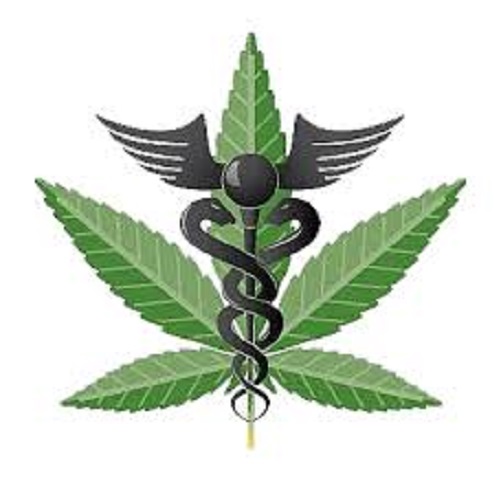Of all the ways that cannabis prohibition causes harm to people, maybe the worst is how it denies many people an effective medicine. The problem is not just limited to the effect that prohibition has on accessing the substance – prohibition also makes it harder to research it and to learn how to best use it. As this article will examine, this has the effect of causing a lot of needless suffering.
Cannabis has been used as a medicine for thousands of years. In fact, as Professor David Nutt wrote this year in the British Medical Journal, it’s probably the oldest medicine known to humanity. Its medicinal effects for treating conditions like depression were known to the scientific literature as far back as 1890.
The fact that cannabis is known to be a medicine today can be demonstrated by going to Google Scholar and typing in “medicinal cannabis”. This returns (at time of writing) 44,000 results, which means that there are over 40,000 medical journal articles and papers investigating medicinal cannabis.
Frustratingly, it’s possible to go back as far as 2008 and see that there are already 14,100 results for a Google Scholar search for “medicinal cannabis”. If one considers that medicinal cannabis was made legal in many American states when even less was known than this, it strikes one how glacial the pace of change has been in New Zealand.
The medical conditions for which cannabis has shown promise include eating difficulties, sleeping problems, Crohn’s disease, epilepsy, multiple sclerosis, nausea and vomiting, pain and wasting syndrome (cachexia) and even mental health conditions like anxiety, schizophrenia, depression, social anxiety disorder and psychosis. In chronic pain situations it can lead to less opiate use.
The problem is the law.
Because of the long-standing prohibitions on cannabis, it’s difficult to properly research the substance. For a university research program to conduct a proper study, they need to test the effects of cannabis on a large number of people, in a controlled and replicable environment. This requires getting hold of a large amount of cannabis – very difficult when cannabis is illegal.
Without being able to conduct large trials, it’s difficult to collect a sufficient amount of data to pass certain levels of proof. Because of the ever-present threat of charlatanism in the pharmaceutical industry, it has become necessary to demand rigourous testing before a prospective medicine gets governmental approval to be sold. Prohibition makes it harder to cannabis to get that approval.
Despite this, there is still a fair bit known about the medicinal effects of cannabis.
It’s acknowledged by honest researchers today that “therapeutic benefits of medicinal cannabis are well documented in the treatment of a variety of medical conditions”. The problem is that, because of prohibition, it’s impossible to arrive at standardised models of production, distribution and prescription.
This is more of a problem than it might first appear to be.
Without a standardised model of production, it’s difficult for doctors to have any confidence in what they’re prescribing. Because many medicines have dosage-dependent adverse side-effects, it’s important to know exactly what proportions of effective medicine are found in each pill that’s being dished out. Impurities are to be avoided. Absent this, it’s impossible for a doctor to know what to prescribe.
Without standardised prescription guidelines, it’s impossible to know how much to prescribe. It’s not just a matter of getting as much cannabis into the patient as possible. Responsible medical practice means being aware of potential side-effects and interactions with other medicines, and how these work with factors like age and body weight. If this knowledge is not present, it might seem wise to err on the side of prudence and ignore cannabis.
After all, even if cannabis prohibition was repealed tomorrow and doctors had access to all the cannabis in the world, they would still need to know how to use it safely before they could feel comfortable prescribing it.
Despite the presence of these hurdles, the fact remains that knowledge of the medicinal applications of cannabis are becoming ever-more widespread. Indeed, even Zimbabwe is aware that cannabis is medicinal. Not only has the impoverished Southern African state had medicinal cannabis since 2017, but their Health Minister is getting praise from other Southern African nations for their relatively forward-thinking stance on the issue.
Some might argue that the New Zealand medical establishment has shown itself to be more interested in toeing the legal and bureaucratic line than actually helping their patients, and that their reluctance to deal with what was clearly an important issue for many of their patients was cowardly. This might be true for many doctors. The point, however, is not to apportion blame, but to determine the correct path forward.
The major problem with unlocking the medicinal potential of cannabis is the law. It’s the law that keeps researchers and scientists from finding out which applications of cannabis make medicinal sense and which ones don’t. Since people are going to use cannabis anyway, it makes sense from a harm reduction perspective to expand our knowledge of the plant. This would make it possible to make better-informed decisions about its use.
Legalising cannabis would restore sanity to the situation. It would allow companies and universities to conduct full-scale trials of medicinal cannabis products. This would allow those medical professionals who are interested in learning about the therapeutic effects of cannabis to have more accurate data upon which to base their prescription decisions.
*
This article is an excerpt from The Case For Cannabis Law Reform, compiled by Vince McLeod and due for release by VJM Publishing in the summer of 2018/19.

